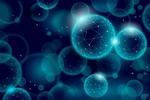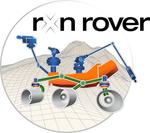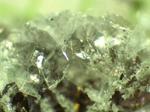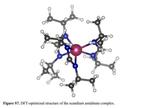Other

“A team of scientists from the U.S. Department of Energy’s Ames National Laboratory demonstrated a way to advance the role of quantum computing in materials research with an adaptive algorithm for simulating materials. Quantum computers have potential capabilities …

“Research into the synthesis of new materials could lead to more sustainable and environmentally friendly items such as solar panels and light emitting diodes (LEDs). Scientists from Ames National Laboratory and Iowa State University developed a colloidal synthesis method for …
News A breakthrough in magnetic materials research could lead to novel ways to manipulate electron flow with much less energy loss

“Newly discovered magnetic interactions in the Kagome layered topological magnet TbMn6Sn6 could be the key to customizing how electrons flow through these materials. Scientists from the U.S. Department of Energy’s Ames National Laboratory and Oak Ridge National Laboratory …

“A recently developed catalyst for breaking down plastics continues to advance plastic upcycling processes. In 2020, a team of researchers led by Ames Laboratory scientists developed the first processive inorganic catalyst to deconstruct polyolefin plastics into molecules that can be …

“Newly discovered Fermi arcs that can be controlled through magnetism could be the future of electronics based on electron spins. These new Fermi arcs were discovered by a team of researchers from Ames Laboratory and Iowa State University, as well …

“A team of experts at the U.S. Department of Energy’s Ames Laboratory has released a new open-source software program called Rxn Rover. It is designed to help chemistry researchers easily and affordably tap into the capabilities of artificial …
News One scientist’s trash is another’s treasure: A laboratory’s “irritating” byproduct now supplies 2-D materials research

“While making materials samples to pursue their own research goals, scientists at the U.S. Department of Energy’s Ames Laboratory discovered that an unwanted byproduct of their experiments was an extremely high-quality and difficult-to-obtain substance sought after by scientists …

“Scientists from the U.S. Department of Energy’s Ames Laboratory have mapped the dynamics of a catalyst’s active site in three dimensions. This achievement gives researchers new insights into how these catalysts work, and potential paths to improve …
News Scientists look to meteorites for inspiration to achieve critical element-free permanent magnet

“The U.S. Department of Energy’s (DOE’s) Critical Materials Institute has developed a low-cost, high performance permanent magnet by drawing inspiration from an out-of-this-world source: iron-nickel alloys in meteorites. The magnet rivals widely used “Alnico” magnets in magnetic …
News Reliable quality-control of graphene and other 2D materials is routinely possible, Ames Lab researchers say

“Graphene and other single-atom-thick substances are a category of wonder materials, with researchers the world over investigating their electronic properties for potential applications in technologies as diverse as solar cells, novel semiconductors, sensors, and energy storage. The greatest challenge for …

